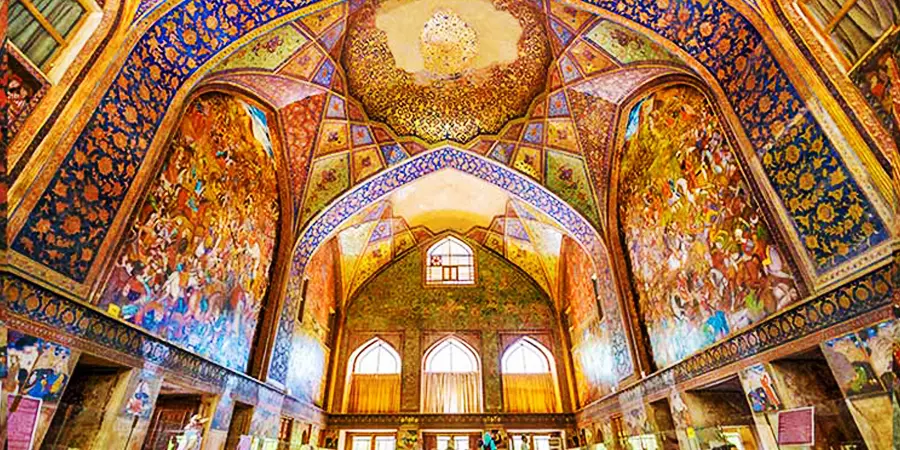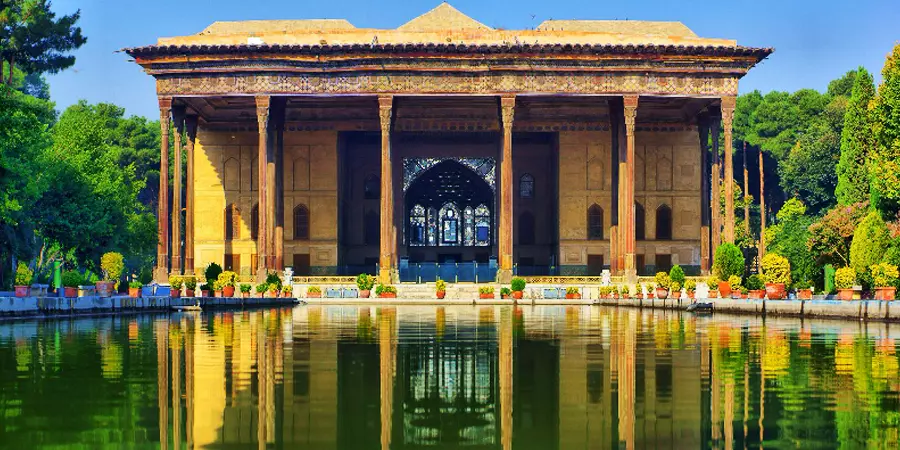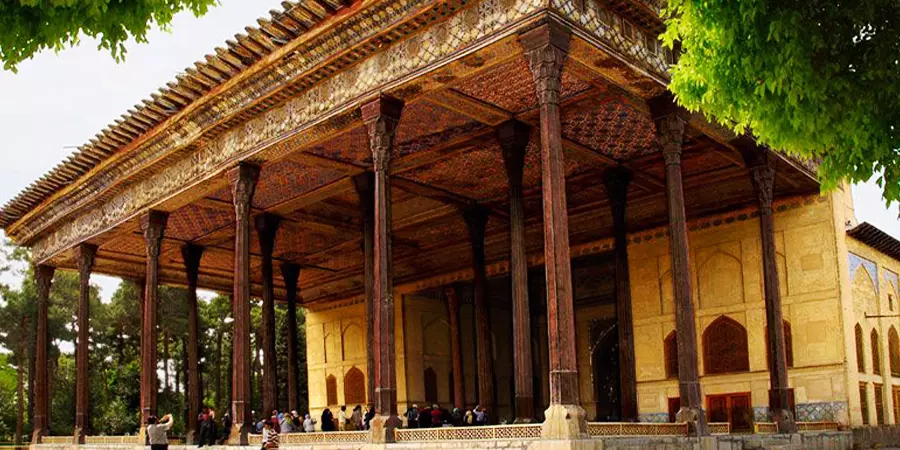In the heart of Isfahan, Iran, lies a magn gem of Persian architecture, the Chehel Sotoun Palace. With its elegant design, intricate detailing, and rich history, this palace stands as a testament to Iran’s cultural heritage. You can visit Chehel Sotoun Palace in the Isfahan tour . Let’s take a journey through time and explore the captivating history and mesmerizing features of the Chehel Sotoun Palace.
Historical Significance
The Chehel Sotoun Palace, translated as “Forty Columns Palace,” was constructed during the Safavid dynasty in the 17th century. It served as a symbol of grandeur and power, often hosting important political events, foreign dignitaries, and royal receptions.
Architectural Brilliance
The palace’s architectural brilliance is evident in its design, blending Persian and Islamic influences. The two-story structure, supported by twenty wooden columns in front and their reflection in the adjacent pool, creates the illusion of “forty columns.” The wooden columns are intricately adorned with vibrant colors, floral motifs, and geometric patterns, showcasing the mastery of Persian craftsmanship.

The Palace Gardens
The surrounding gardens of the Chehel Sotoun Palace are a tranquil oasis. Lush greenery, flowing water features, and meticulously planned pathways create an ambiance of serenity and beauty. These gardens served as a place for leisure and contemplation for the royal court.
Frescoes and Artistry
The interior of the palace is adorned with stunning frescoes depicting historical events, battles, and court life. The vivid colors and intricate details of these frescoes provide a visual narrative of the era, offering a glimpse into the past.
Royal Functions and Receptions
Chehel Sotoun Palace witnessed numerous grand celebrations, receptions, and festivities. The open veranda and grand hall served as spaces for royal functions, where music, dance, and cultural performances unfolded, showcasing the opulence and vibrancy of Safavid society.
Symbolism of “Chehel Sotoun”
The name “Chehel Sotoun” holds a deeper meaning. “Chehel” means forty in Persian, symbolizing the twenty actual columns mirrored in the reflecting pool, creating the illusion of forty. The number forty also carries symbolic significance in Persian culture, representing a sense of completion and wholeness.

Preservation Efforts
Efforts to preserve the Chehel Sotoun Palace have been ongoing. Restoration projects and maintenance have ensured that this architectural masterpiece remains a living testament to Iran’s history and culture, allowing future generations to appreciate its grandeur.
Visitor Experience
Today, visitors from around the world have the opportunity to explore the magnificence of the Chehel Sotoun Palace. Guided tours offer insights into its history, architecture, and cultural significance, immersing visitors in a journey through time.
Influence on Modern Architecture
The influence of Chehel Sotoun Palace extends beyond its historical era. Its architectural elements, intricate designs, and harmonious integration with nature have inspired contemporary architects, influencing the design of modern buildings and public spaces.
Iconic Reflection Pool
One of the most iconic features of the palace is its reflection pool. The mirrored surface creates a breathtaking visual effect, amplifying the beauty of the palace’s columns and surrounding scenery.
Evening Illumination
As the sun sets, the palace transforms into a magical spectacle. Skillful illumination highlights its architectural details, casting an enchanting glow over the gardens and reflecting pool, making it a sight to behold.
Art and Culture Exhibitions
Chehel Sotoun Palace continues to be a hub for artistic and cultural exhibitions. It hosts events that celebrate Iran’s rich heritage, including art exhibitions, music performances, and cultural festivals, fostering a connection between the past and present.
The Grand Veranda
The grand veranda offers a panoramic view of the palace gardens and the surrounding landscape. It served as a gathering place for nobles, dignitaries, and the royal family, where they could appreciate the beauty of their kingdom.

Conclusion
The Chehel Sotoun Palace stands as a remarkable testament to Iran’s architectural and cultural legacy. Its intricate designs, historical significance, and harmonious integration with nature make it a must-visit destination for travelers and enthusiasts alike. As visitors step into its halls and gardens, they are transported back in time to an era of opulence and creativity.
Can visitors take photographs inside the palace?
Yes, photography is allowed inside the palace, but it’s advisable to check the guidelines during your visit.
Are guided tours available in multiple languages?
Yes, guided tours are usually available in various languages to accommodate international visitors.
What is the best time to visit the palace?
The best time to visit is during the spring and fall months when the weather is pleasant, and the gardens are in full bloom.
Are there any nearby attractions to visit along with the palace?
Yes, the Chehel Sotoun Palace is often visited along with other nearby attractions such as Naqsh-e Jahan Square and Imam Mosque for a comprehensive cultural experience.




No comment